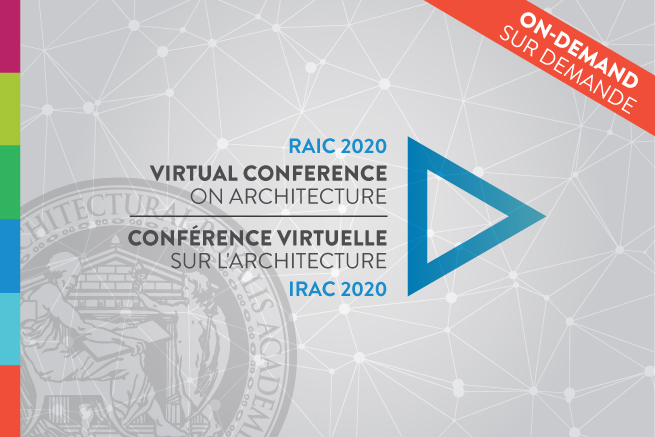
ABOUT | REGISTRATION| SPONSORS| PROGRAM | SPEAKERS | FAQ

The RAIC’s Annual Conference on Architecture is an important gathering for the profession in Canada. As the state of our day-to-day lives continues to shift and we adapt to new realities, the RAIC’s commitment to supporting the practice remains a top priority. The RAIC has therefore transitioned its annual conference to a virtual platform. With the success of the live broadcast, the RAIC Virtual Conference on Architecture is now available on-demand!
Join your colleagues and peers in a virtual learning and networking experience. The RAIC Virtual Conference on Architecture brings together professionals at every stage in their career to learn, explore, and discuss the challenges and opportunities facing the practice. The virtual program offers eighteen hours of structured learning in a flexible format. Participants will learn from industry-leading experts through educational sessions on a diverse range of topics. While 12 of the sessions are now available, the 6 broadcasted session will be made available June 18.
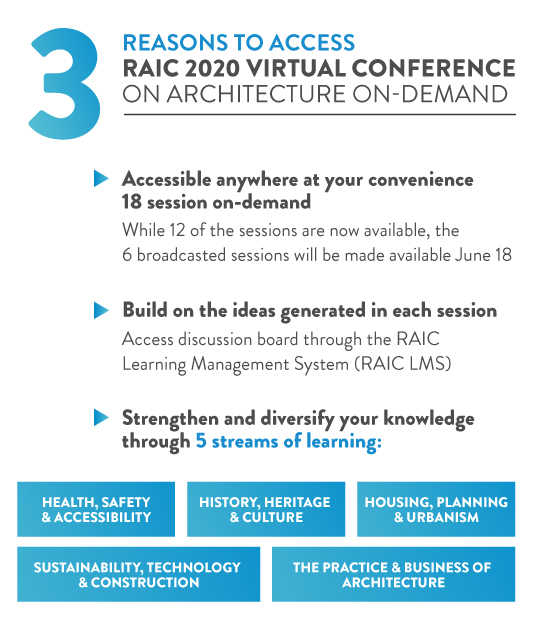

REGULAR | STUDENT| INTERN | RETIRED
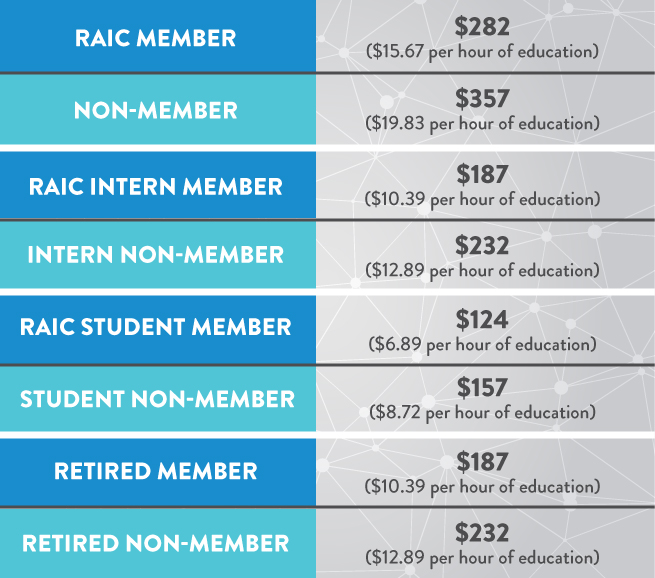
Canadian Architecture Forums on Education: Toward an Architecture Policy for Canada
Live Broadcast | 1 CEU
History, Heritage and Culture
June 4, 2020
11:00 a.m. – 12:00 p.m. EDT
This session will share outcomes of a year-long consultation process involving students and professors from all 12 Canadian schools of architecture. Beginning in Fall 2019, a series of forums were held to gauge and debate aspirations and concerns of the next generation of design professionals. Led by the Canadian Council of University Schools of Architecture (CCUSA), these Canadian Architecture Forums on Education (CAFÉs) were established to help define the tone and tenets of a national architecture strategy. Through presentation and interactive demonstration of consultation processes, RAIC participants will explore the role of education and research in shaping Canada’s architectural future.
Presented by:
Lisa Landrum
B.Arch, M.Arch2, PhD, MAA, AIA, FRAIC
Associate Professor, Associate Dean, University of Manitoba
Canada Declares - How Canadian Architects can begin to address the challenge of halving our annual emissions by 2030.
Live Broadcast | 1 CEU
Sustainability, Technology and Construction
June 4, 2020
12:30 p.m. - 1:30 p.m. EDT
The climate challenge we face is overwhelming and complex. Our industry's emissions currently account for 40% of total global annual emissions. To meet the 2030 challenge we must radically refocus that effort into our biggest contributor to carbon emissions over the coming decade - embodied carbon. Collectively we need to face new questions: How do we now choose between two different window options, two doors, two walls, two structural systems? Assuming both options perform and cost the same, does either contain minerals and materials that were sustainably sourced, processed and transported? Was either sourced and made with fair labour? Does either option have half the carbon footprint of the industry norm? What is the norm? This panel will address the most pressing question of our profession, and provide theoretical, technical and policy background to enable participants to address this challenge.
Presented by:
Kelly Alvarez Doran
M.Arch, OAA
Senior Principal, MASS Design Group
Anthony Pak
P.Eng., MSc.
Principal, Priopta
Housing Academic Communities – Designing Exceptional Environments for Student Living
Live Broadcast | 1 CEU
Housing, Planning and Urbanism
June 4, 2020
2:00 p.m. – 3:00 p.m. EDT
Student housing has the ability to impact academic performance and influence future success. Learn how student residence design is responding to economic and cultural change to create inspiring environments that foster a sense of community and fellowship.
Drawing on the experience of delivering more than 10,000 residence beds across Canada, including two recent projects in Edmonton, this typology case study highlights architectural innovation both in new construction and adaptive reuse to create hubs of student activity that anticipate the collaborative environment of today’s workplace. Design issues of privacy, security, even managing the pervasive presence of digital devices will be discussed.
Presented by:
Ana Maria Llanos
M. Arch. Architect AIBC OAA RAIC LEED AP
Principal, Diamond Schmitt Architects
Gary Watson
B.Tech.Arch BEDS M.Arch, OAA, MRAIC
Senior Associate, Diamond Schmitt Architects
Live Broadcast | 1 CEU
Health, Safety and Accessibility
June 4, 2020
4:00 p.m. – 5:00 p.m. EDT
This session is presented by the RAIC Emerging Practitioners (RAIC EP).
For many of those in the architectural profession, long hours and build up of stress is an accepted reality. Owners of firms, along with their employees, can feel overwhelmed by the shear number of tasks and concerns which must be juggled on any given day - from financial concerns relating to running a practice to general project issues- which can lead to burn out and other mental health issues. This session will review the main causes of burn out - not just for the owner of a practice but to all those working in a firm - and discuss how to avoid and address it. The presentation will share both research data as well as anecdotal information garnered via a series of interviews. Mental health is a serious issue in the architectural profession and this session aims to shed light on the topic while encouraging more open discussion.
Presented by:
Ksenia Eic
NWTAA, OAA, MRAIC
Managing Associate, Taylor Architecture Group
RAIC EP Committee Member
Architecture, Anthropology and Social Acceptance: Design that Created Zones of Acceptance in Vancouver's Downtown Eastside
Live Broadcast | 1 CEU
Health, Safety and Accessibility
June 4, 2020
5:30 p.m. - 6:30 p.m. EDT
This presentation documents a series of community-based design initiatives dating from 2001 to the present day, spear-headed by the Portland Hotel Community Services Society, that deliver a comprehensive response to the needs of individuals living on the margins in Vancouver with multiple barriers to their psycho-social well-being --- including poverty, injection drug use, HIV/AIDS, HCV, trauma, homelessness, conflict with the law, mental illness, and survival sex trade involvement.Architect Sean McEwen and Anthropologist Dr. Dan Small, will describe such design collaborations as InSite, North America's first supervised injection facility, OnSite, a detox without barriers, and other social service and social entrepreneurial initiatives that serve the local community. In total, these projects have facilitated the creation of a zone of acceptance for the marginalized in Vancouver's Downtown Eastside, and may serve as an example of how other urban centres can respond to a range of significant social challenges.
Presented by:
Sean McEwen
Architect aibc fraic
Architect, S.R. McEwen Architect
Dan Small
PhD, MPhil. Cantab., BA Soc/Anth Hon, BA Psych. Hon
Medical Anthropologist, University of British Columbia
Rise for Architecture
Live Broadcast
History, Heritage and Culture
June 4, 2020
7:00 PM- 8:00 PM EDT
This presentation and discussion will discuss a current collaborative initiative of the Canadian Architectural Licensing Authorities (CALA), the Canadian Council of University Schools of Architecture (CCUSA) and the Royal Architectural Institute of Canada (RAIC) focused on the development and implementation of an Architecture Policy for Canada. The session will include discussion of the consultation feedback received to date, provide an overview of the emerging vision statement and discuss calls to action for the profession.
Presented by:
Darryl Condon
Architect, AIBC, AAA, SAA, OAA, NLAA, AIA, FRAIC, LEED AP
Managing Principal, HCMA Architecture + Design
On-Demand Sessions
Creating a Legacy with Transit Architecture: Lessons Learned
On-Demand | 1 CEU
Housing, Planning and Urbanism
How can architects design great transit infrastructure that preserves built heritage and creates a legacy?
The growing demand for the expansion of transit infrastructure asks architects to address the heritage of the City today while designing a legacy for future generations. This session will focus on three case studies: the Eglinton Crosstown LRT stations that are adjacent to- or within heritage buildings; the London, Ontario BRT which used community consultations to determine the heritage components of new stations; and Finch West which integrated Public Art into its design. The session will provide insight on the balance required to consider both legacy and preservation.
Presented by:
Ana-Francisca de la Mora
MRAIC, OAA ARQ, LEED AP BD+C
Associate Director – Practice Lead, Architecture, IBI Group
Cybersecurity: Mitigating Risks and Protecting data
On-Demand | 1 CEU
The Practice and Business of Architecture
Architectural firms have tremendous motivation to protect their digital data, however many organizations do not take the proper steps to mitigate these risks. This presentation will discuss some common methods that attackers utilize to gather information before launching an attack, why it is important for organizations to consider the security of their digital data, and how to mitigate these risks.
Presented by:
Ryan Duquette
Licensed private investigator, Masters of Science (Digital Forensics Management), Certified Fraud Examiner
Partner - Security, Privacy and Risk Consulting, RSM Canada
Filling in the Blanks: Missing Middle Infill Design Competition
On-Demand | 1 CEU
Housing, Planning and Urbanism
Endorsed by the Alberta Association of Architects (AAA), the Missing Middle Infill Design Competition drew 30 proposals from teams of architects and builders/developers from across Canada and as far away as London, UK. Their task: design a multi-unit, ‘missing middle’ housing development that was not only thoughtful of neighbourhood context, but also economically feasible and well-designed to work in Edmonton. An esteemed National Jury Panel from across Canada reviewed the proposals and awarded first, second and third place honours to the top finalists. The winning team has acquired the right to purchase five parcels of City-owned land at the northeast corner of 112 Avenue and 106 Street in the Spruce Avenue neighbourhood and build their winning design, subject to rezoning approval. The Infill Design Competition is one of many ways the City is working to help encourage more and better infill in Edmonton. The competition is part of action five on the Edmonton Infill Roadmap 2018, the City of Edmonton’s work plan for welcoming more people and homes into Edmonton’s older neighbourhoods to help keep these neighbourhoods vibrant and healthy. The City Plan, which will be completed in 2020, will set out the choices that will help our city grow to a city of two million people, and reach the goal of creating vibrant urban communities. A big part of reaching this goal will involve increasing housing choices, particularly how we can integrate more housing in the ‘missing middle' range. A panel featuring the City of Edmonton (City Planning, Development and Zoning Services, Real Estate, Law, Communications), the winning design team (Studio North, Gravity Architecture, Part + Parcel, and the Spruce Avenue Community League will share lessons learned on how the competition drew in well-designed, economically feasible designs — and how the process employed helped to attract interest from across the country, to fortify community support, and to ensure the winning design would be built.
Presented by:
Jason Syvixay
Master of City Planning
Principal Planner, City of Edmonton
Joshua Culling
Master of Urban Planning
Urban Planner and Community Advisor
Hazel Borys
Chief Executive Officer
PlaceMakers, Inc.
James Sande
AACI Senior Strategist, Land Governance, Real Estate, City of Edmonton
Karen Parker
Manager of Business Analytics, City of Edmonton
Mark Erickson
Principal, Studio North
Inclusive Design in the Federal Government
On-Demand | 1 CEU
Health, Safety and Accessibility
With the amendment to the “Canadian Human Rights Act” and the creation of Canada’s first federal accessibility legislation “Accessible Canada Act” the federal government has a focused interest on inclusive design for all. This session will focus on the built environment, how the legislation is interpreted with respect to gender neutral facilities; such as, washrooms, change rooms and showers. The presentation will share research and development by federal government departments, stakeholder engagements and lessons learned from implementation of respectful universally inclusive facilities.
Presented by:
Murray Gallant
OAA, FRAIC, AIA, B.Arch., H.Dipl. Arch. Tech.
Chief Architect, National Defence
Robert J Smith
OAA, RAIC
Architectural Advisor, House of Commons
Parametric Design: The Past and the Future
On-Demand | 1 CEU
Sustainability, Technology and Construction
Parametric Design has often been reduced to merely Parametricism which is a self-referential system using internal mathematical equations translated into computer algorithms to create fashionable and complex forms that has only a little, if any, input from the real-world parameters. On the contrary, Parametric Design is neither new in architecture history nor limited to computational formal extravagance. It is a way of thinking that was used in the past, like analogue models by Gaudi, and should be further studied to find ways to better incorporate environmental, social, structural, and geographical parameters in architecture models using algorithms and real-world data.
Presented by:
Reza Assasi
PhD (Architecture), MArch II, MArch, OAA
Architect, Professor, Centennial College
Restore, Renew, Revitalize: Working With Canada’s Modern Heritage
On-Demand | 1 CEU
History, Heritage and Culture
Canada’s modern buildings represent a significant attempt to forge a national identity and a vital architectural legacy for the country. As these buildings enter their next 50 years of service, however, many are in need of significant modernization. Through case studies of five significant projects, this session explores the conceptual, technical, and logistical challenges particular to working in buildings of this era. Case studies include:
- Viljo Revell’s Nathan Phillips Square
- Arthur Erickson’s Bank of Canada Headquarters
- Ron Thom’s Bata Library
- John Andrews’ Weldon Library
-
Dimitri Dimakopoulos’ Place du Portage Complex
Presented by:
Andrew Frontini
OAA, NSAA, FRAIC, LEED® AP BD+C
Principal, Design Director, Perkins and Will
Jon Loewen
OAA, MRAIC, LEED® AP BD+C, Certified Passive House Designer
Associate, Senior Architect, Perkins and Will
Soundscape, Human Perception, and the Built Environment
On-Demand | 1 CEU
Health, Safety and Accessibility
Noise is an essential sensory stimulus and impossible to ignore. Any disturbing noise can be agitating and confusing. Soundscape refers to the human perception of the auditory environment in context; it relies on the subjective quality of sound and the objective quality of the auditory environment based on people’s perception. We design a space based on the idea that users have the same perception of the space as we intended. Not everyone, however, has the same capability to perceive the space. This session introduces the concept of the soundscape and how to conduct a soundscape study and evaluate the outcome.
Presented by:
Arezoo Talebzadeh
OAA, NCARB, MRAIC
Architect, Kasian
Spaces, People, Things: Environments for People Living with Dementia
On-Demand | 1 CEU
Health, Safety and Accessibility
How can we improve quality of life for people with dementia where they live? As researcher-in-residence in a care facility, Lara Pinchbeck uses findings from an extensive international University of Alberta research study to provide insight and influence on design to change the daily life for aging adults with dementia. Learn how elements from these findings will make a healthy and happy environment for people aging-in-place. A model of the material environment will be presented as the basis to shift the design process beyond the four walls. The session will also highlight current examples of practical applications.
Presented by:
Lara Pinchbeck
MA (Material Culture + Design Studies), BEDS (Architecture), Professional Human Ecologist, Rick Hansen Foundation Professional Accessibility Assessor, Public Relations Diploma, International Association for Public Participation Certification, PRINCE2 Proj
Founder + Principal; PHD Student, Lara Pinchbeck: Research+Design; University of Alberta
Charles Olfert
Architect AAA, SAA, FRAIC, LEED AP
Principal, aodbt architecture + interior design
Walterdale Bridge: the making of a destination to ‘Touch the Water’
On-Demand | 1 CEU
Housing, Planning and Urbanism
How do you make an infrastructure project, a replacement bridge, a public place? The Walterdale Bridge project team sought to answer this question through a unique design process bringing together architects, engineers, urban designers, landscape architect and artists to realize the potential of this incredible location in Edmonton’s Saskatchewan River Valley. The new bridge, a gracious single span arch, has quickly become a landmark and a gateway to the City’s downtown. But it is more than a bridge across a river. By integrating the bridge with a passerelle, connecting to the river valley trail system, intertwining nature, history and art an engaging public place is created, a destination on the river; where the duality of city and nature are experienced and celebrated.
Presented by:
Donna Clare
AAA, OAA, FRAIC, RCA
Principal, DIALOG
Doug Carlyle
BES, M LAND ARCH, AALA, FCSLA, ASLA (International), RCA
Principal, DIALOG
Dr. James Montgomery
AAA, OAA, FRAIC, RCA
Principal, DIALOG
Your Building. Our Collective Future.
On-Demand | 1 CEU
Health, Safety and Accessibility
Over 20% of Canadian adults identify as having a disability, and this number is rising as our population ages. 70% of Canadians believe that all new buildings should be universally accessible. The usual approach to setting the level of accessibility of the built environment often relies on minimum requirements, such as building code. This does not meet the needs of all its users. The Rick Hansen Foundation Accessibility Certification™ (RHFAC) is the only national program that rates and certifies the built environment on its level of meaningful access, ensuring everyone has access to the places where we live, work, learn, and play. This session will leave you understanding the critical role you play in rethinking how we design the built environment, along with practical information on how you can design spaces for everyone, everywhere.
Presented by:
Darryl Condon
Architect, AIBC, AAA, SAA, OAA, NLAA, AIA, FRAIC, LEED AP
Managing Principal, HCMA Architecture + Design
When Architects Design for Themselves
On-Demand | 1 CEU
History, Heritage and Culture
Throughout architecture school, we all dream of the great projects and designs we will accomplish upon graduation. Then the reality of budgets, client preconceptions and zoning by-laws start to nibble at the margins of the great design. But, when architects design for themselves, we take back full ownership of that dream. This session explores case studies and lessons-learned when the architect is designer, critic, client and occupant.
Presented by:
Terrence E. Smith-Lamothe
MRAIC, NSAA, M.Arch., B. Env. S., B. Sc., LEED a.p.
Architect, Architech, Ltd.
Designing for Community Wellbeing
On-Demand | 1 CEU
Health, Safety and Accessibility
The built environment is intricately tied with the wellbeing of people and the environment. With this idea, though well intended, most architects, planners, and designers operate from a place of intuition. This session will review an evidence-based methodology and set of indicators developed by the Conference Board of Canada (and others) intended to guide the work of design-professionals and city-builders. The Community Wellbeing Framework embraces a proactive approach to wellbeing, including mental health, social wellbeing, and contextual nuances. Following a presentation, participants will be able to workshop the fundamentals to elucidate ways of enriching their individual practices.
Presented by:
Antonio Gomez-Palacio
Arq. MES, RPP, MCIP, FRAIC
Principal, DIALOG
Ana Maria Llanos
M. Arch. Architect AIBC OAA RAIC LEED AP
Principal, Diamond Schmitt Architects
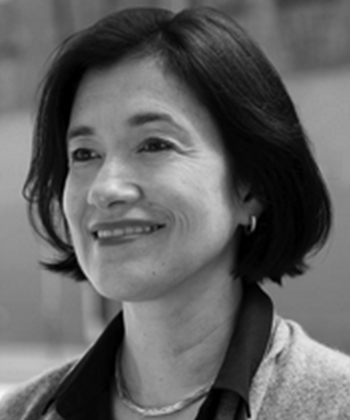
Ana Maria Llanos leads the Vancouver studio of Diamond Schmitt. Her work is focused on western Canada, including institutional, health care facilities, performing arts, residential, commercial, restoration and academic projects. Recent works includes Emily Carr University of Art + Design. She is a graduate of UBC’s School of Architecture and is rooted in the west coast lifestyle of British Columbia. ↑back
Ana-Francisca de la Mora
MRAIC, OAA ARQ, LEED AP BD+C
Associate Director – Practice Lead, Architecture, IBI Group
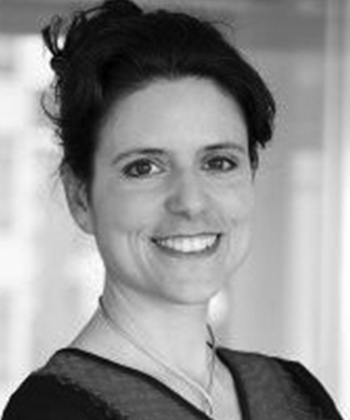
Ana-Francisca is an architect with over 18 years of experience. Her work is characterized by innovative design with a commitment to making healthy and inclusive spaces. Her work focuses on large-scale transit and Transit Oriented Development in Canada, Latin-America and Saudi Arabia. Ana-Francisca is currently leading the design and construction of the Eglinton Crosstown LRT’s Keelesdale Station, Summerhill Station Easier Access and the Richmond Hill Terminal in Toronto. ↑back
Andrew Frontini
OAA, NSAA, FRAIC, LEED® AP BD+C
Principal, Design Director, Perkins and Will
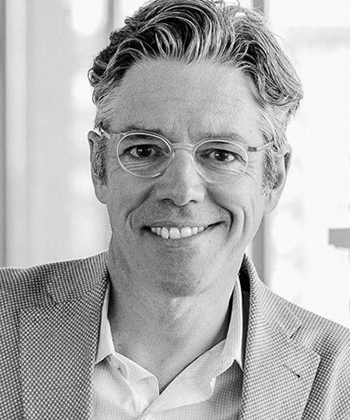
Andrew’s approach to design is driven by a strong social agenda. He uses bold material expressions and considered responses to context to create spaces around which communities form. By maintaining a design philosophy that is open and collaborative, Andrew never stops learning, producing, and evolving. His award-winning designs for universities, municipalities, library systems, and commercial clients have been published internationally. ↑back
Anthony Pak
M.Arch, OAA
Principal, Priopta
 Anthony is the Principal at Priopta, a Life Cycle Assessment (LCA) consulting firm that is one of the first in North America to offer a custom Parametric LCA service for new construction projects. He is also the founder of ECN Vancouver—the first local chapter of the Embodied Carbon Network—which organizes local events that empower building industry professionals to champion the topic of embodied carbon on their projects and within their firms. He is a Professional Engineer with a Masters in Industrial Ecology from NTNU, which is a leading LCA research group in Norway. Anthony is passionate about building awareness around embodied carbon and frequently gives presentations locally and internationally at conferences, industry events, and lunch and learns at leading design firms. ↑back
Anthony is the Principal at Priopta, a Life Cycle Assessment (LCA) consulting firm that is one of the first in North America to offer a custom Parametric LCA service for new construction projects. He is also the founder of ECN Vancouver—the first local chapter of the Embodied Carbon Network—which organizes local events that empower building industry professionals to champion the topic of embodied carbon on their projects and within their firms. He is a Professional Engineer with a Masters in Industrial Ecology from NTNU, which is a leading LCA research group in Norway. Anthony is passionate about building awareness around embodied carbon and frequently gives presentations locally and internationally at conferences, industry events, and lunch and learns at leading design firms. ↑back
Antonio Gomez-Palacio
Arq. MES, RPP, MCIP, FRAIC
Principal, DIALOG
 Antonio Gomez-Palacio, is a founding partner of DIALOG, one of Canada’s leading design firms. He is internationally recognized for transforming cities into vibrant urban places, which respond to their social, economic, environmental, and political context. Grounded on both a participatory and an evidence-based approach, his work is credited with meaningfully improving the wellbeing of communities.Antonio has worked on a wide range of projects focused on urban intensification, master planning, mixed-use, transit, heritage, economic development, and sustainability. Antonio has acted as the Chair of the Toronto Society of Architects and Vaughan’s Design Review Panel and is involved with a number of industry initiatives and organizations including the Canadian Institute of Planners, the Royal Architectural Institute of Canada (of which he was names a Fellow this year), and the Canadian Urban Transit Association. He is currently leading multi-sectoral research on the link between built environments and Community Wellbeing. ↑back
Antonio Gomez-Palacio, is a founding partner of DIALOG, one of Canada’s leading design firms. He is internationally recognized for transforming cities into vibrant urban places, which respond to their social, economic, environmental, and political context. Grounded on both a participatory and an evidence-based approach, his work is credited with meaningfully improving the wellbeing of communities.Antonio has worked on a wide range of projects focused on urban intensification, master planning, mixed-use, transit, heritage, economic development, and sustainability. Antonio has acted as the Chair of the Toronto Society of Architects and Vaughan’s Design Review Panel and is involved with a number of industry initiatives and organizations including the Canadian Institute of Planners, the Royal Architectural Institute of Canada (of which he was names a Fellow this year), and the Canadian Urban Transit Association. He is currently leading multi-sectoral research on the link between built environments and Community Wellbeing. ↑back
Arezoo Talebzadeh
OAA, NCARB, MRAIC
Architect, Kasian
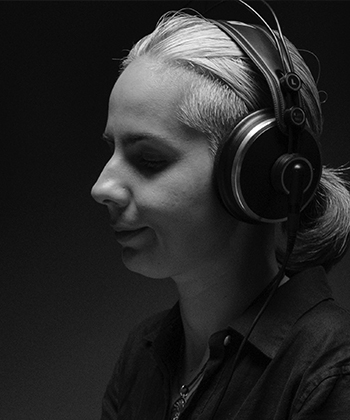 Arezoo Talebzadeh is a registered architect with more than 15 years of experience in private and public projects in Canada. She became fascinated by public health through senior housing projects, which prompted her to get a master’s degree in Design for Health from OCAD university focusing on soundscape in dementia care units in collaboration with Toronto Rehabilitation Institute. ↑back
Arezoo Talebzadeh is a registered architect with more than 15 years of experience in private and public projects in Canada. She became fascinated by public health through senior housing projects, which prompted her to get a master’s degree in Design for Health from OCAD university focusing on soundscape in dementia care units in collaboration with Toronto Rehabilitation Institute. ↑back
Charles Olfert
Architect AAA, SAA, FRAIC LEED
Principal, aodbt architecture + interior design

Charles Olfert is an Architect and founding principal of aodbt architecture + interior design. His passion to create accessible environments for all people has guided his career. Charles is Rick Hansen Foundation Professional Accessibility Certified Assessor. ↑back
Dan Small
Medical Anthropologist, University of British Columbia
Dr. Dan Small is a medical anthropologist and Research Associate in the Department of Anthropology at the University of British Columbia where he teaches in both anthropology and sociology. He is trained in psychology, sociology, anthropology, circumpolar studies and medical anthropology. His research has examined the etiology of addiction, culture in mental health, social determinants of health as well as patient, family and professional understandings of cancer genetics. He has helped develop and operate a range of healthcare, housing and social enterprises for marginalized populations including: North America’s first supervised injection facility (Insite), a community grocery store, inner city bank, art gallery, harm reduction (e.g. syringe distribution, supervised injection, safer crack kits, managed alcohol, intravenous antibiotic treatment and a drug users resource centre), a free dental clinic, low-barreir detox and East Van Roasters chocolate shop for women in recovery. He has made it his professional goal to use cultural analysis to unpack professional and institutional narratives in order to help create more person-centred approaches to healthcare. ↑back
Darryl Condon
Architect, AIBC, AAA, SAA, OAA, NLAA, AIA, FRAIC, LEED AP
Managing Principal, HCMA Architecture + Design
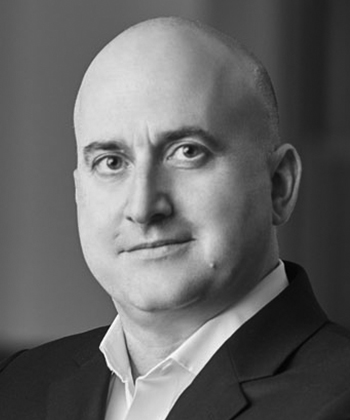 Darryl is a registered Architect, a LEED Accredited Professional and a Fellow of the Royal Architectural Institute of Canada. He is a Past-President of the Architectural Institute of British Columbia and has been an adjunct professor at the UBC School of Architecture and Landscape Architecture. Darryl has lectured and presented extensively, locally nationally and internationally, on a variety of subjects related to architecture, design and the future of practice. Over the past ten years he has performed over 60 speaking assignments including six international talks in 2019. A comprehensive list of previous talks is available upon request. ↑back
Darryl is a registered Architect, a LEED Accredited Professional and a Fellow of the Royal Architectural Institute of Canada. He is a Past-President of the Architectural Institute of British Columbia and has been an adjunct professor at the UBC School of Architecture and Landscape Architecture. Darryl has lectured and presented extensively, locally nationally and internationally, on a variety of subjects related to architecture, design and the future of practice. Over the past ten years he has performed over 60 speaking assignments including six international talks in 2019. A comprehensive list of previous talks is available upon request. ↑back
Donna Clare
AAA, OAA, FRAIC, RCA
Principal, DIALOG
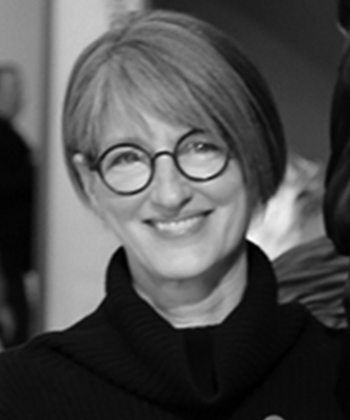 Donna Clare is an Architect and Principal at DIALOG, an interdisciplinary design practice with studios in Canada and the United States. A graduate of the University of Toronto School of Architecture, she has practiced in Toronto, San Diego and Edmonton building a portfolio of work that covers a broad spectrum of building typologies. Donna is an innovative, creative architect committed to community wellbeing. ↑back
Donna Clare is an Architect and Principal at DIALOG, an interdisciplinary design practice with studios in Canada and the United States. A graduate of the University of Toronto School of Architecture, she has practiced in Toronto, San Diego and Edmonton building a portfolio of work that covers a broad spectrum of building typologies. Donna is an innovative, creative architect committed to community wellbeing. ↑back
Doug Carlyle
AAA, OAA, FRAIC, RCA
Principal, DIALOG
 Doug Carlyle is a nationally recognized award-winning Landscape Architect and Principal at DIALOG. He brings over three decades of experience in urban design and landscape architecture. He strives for placemaking that offers meaningful and memorable experiences from the large to the small scale. He is a passionate advocate for increased community wellbeing through city building and placemaking initiatives. ↑back
Doug Carlyle is a nationally recognized award-winning Landscape Architect and Principal at DIALOG. He brings over three decades of experience in urban design and landscape architecture. He strives for placemaking that offers meaningful and memorable experiences from the large to the small scale. He is a passionate advocate for increased community wellbeing through city building and placemaking initiatives. ↑back
Gary Watson
M. Arch. Architect AIBC OAA RAIC LEED AP
Senior Associate, Diamond Schmitt Architects
 Gary Watson, Senior Associate, Diamond Schmitt Architects, works on large-scale academic buildings, athletic facilities, theatres, hospitals, offices and residential. He is passionate about workflow efficiencies providing architects more time to focus on design. His advocacy for advancing technology in studio has made the firm an early adopter of leading edge practices in the vanguard of digital architecture practice. ↑back
Gary Watson, Senior Associate, Diamond Schmitt Architects, works on large-scale academic buildings, athletic facilities, theatres, hospitals, offices and residential. He is passionate about workflow efficiencies providing architects more time to focus on design. His advocacy for advancing technology in studio has made the firm an early adopter of leading edge practices in the vanguard of digital architecture practice. ↑back
Hazel Borys
Chief Executive Officer
PlaceMakers, Inc.
Hazel Borys is President of PlaceMakers, LLC in the US and PlaceMakers, Inc., in Canada, city planning firms working to advance the liveability conversation. She guides governments around the world through land use law reforms — allowing walkable, mixed-use, compact, resilient places to develop by-right — and helps developers get things built under the increasingly prevalent form-based by-laws of the new economy. Hazel is an engineer with an MBA in finance and marketing. She is the organizer of the Placemaking@Work webinar education series, CodesStudy.org co-author, and PlaceShakers.com blogger. Hazel serves as a board member on both the Transect Codes Council and the Winnipeg Foundation. ↑back
Dr. James Montgomery
AAA, OAA, FRAIC, RCA
Principal, DIALOG

Jim Montgomery is a Structural Engineer and Principal at DIALOG. He has led the design and construction of many significant projects including the Walterdale Bridge, the Royal Alberta Museum and the Calgary Cancer Centre. Jim is the recipient of APEGA’s Centennial Leadership Award, the Consulting Engineers of Alberta Lieutenant Governor’s Award for Distinguished Achievement, and is a Fellow of the Canadian Academy of Engineering. ↑back
James Sande
AACI Senior Strategist
Land Governance, Real Estate, City of Edmonton

James has 25 years of commercial real estate valuation experience in both the public and private sectors. He has led and supported land management policy and strategy development for the City of Edmonton since 2017. James holds degrees in Law and Commerce. ↑back
Jason Syvixay
Master of City Planning
Principal Planner, City of Edmonton

Jason has presented at various conferences and events, discussing planning issues related to equity in public space, representation, and infill development. Jason is an award-winning urban planner and public relations professional from Winnipeg, Manitoba. He has a passion for people and places, and engages in city building that listens to and empowers the community, builds knowledge and capacity, and works towards equity in urban places. Through media platforms such as the Winnipeg Free Press, Plan Canada, Canadian Architect, and Style Manitoba, Jason has shaped and informed dialogue around pressing urban issues. Jason holds a Master of City Planning from the University of Manitoba, a Bachelor of Science and Bachelor of Arts from the University of Winnipeg, and is completing his Doctor of Philosophy in Urban and Regional Planning at the University of Alberta. He is an RPP Candidate and a member of the Canadian Institute of Planners. ↑back
Jon Loewen
OAA, NSAA, FRAIC, LEED® AP BD+C
Associate, Senior Architect, Perkins and Will

Jon is an enthusiastic collaborator dedicated to high-performance design. Driven by a commitment to tackling complex problems with creativity and elegance, he believes great design cultivates inspirational and inclusive communities. Jon delivers creative vision and innovative solutions informed by a deep understanding of stakeholder and user priorities to maximize the potential of spaces for learning, collaboration, and well-being. ↑back
Joshua Culling
Master of City Planning
Urban Planner, Community Advisor
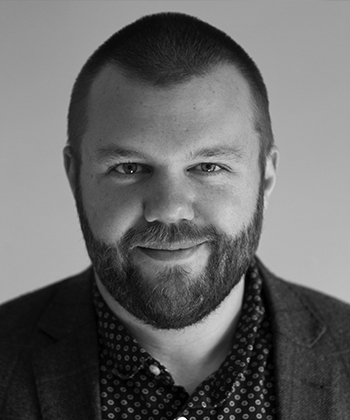
Joshua was a community advisor to the City of Edmonton's 'Missing Middle' Infill Design Competition process, ensuring community perspectives were upheld during the jury deliberations. He is currently the Vice President of the Spruce Avenue Community League. A graduate of the Master of Science in Urban and Regional Planning program at the University of Alberta, Joshua works for a local municipality. He lives in a semi-detached infill with his wife, son and Boston Terrier. ↑back
Karen Parker
Manager of Business Analytics, City of Edmonton
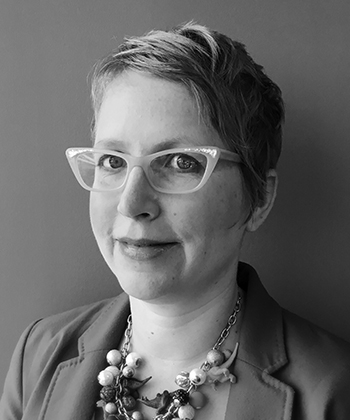 Karen has been instrumental in advocating for better use of data both within the City of Edmonton organization and for its citizens. She has created multiple tools to make data more accessible, including the popular "Kids Map of Edmonton". Prior to joining the City of Edmonton, Karen worked as a business analyst in the software consulting industry. This experience, combined with an education background in Computer Science and Human-Computer Interaction, has left her not only with a keen understanding of the technology of data, but also the ability to translate it into usable visualizations and to educate others about it. ↑back
Karen has been instrumental in advocating for better use of data both within the City of Edmonton organization and for its citizens. She has created multiple tools to make data more accessible, including the popular "Kids Map of Edmonton". Prior to joining the City of Edmonton, Karen worked as a business analyst in the software consulting industry. This experience, combined with an education background in Computer Science and Human-Computer Interaction, has left her not only with a keen understanding of the technology of data, but also the ability to translate it into usable visualizations and to educate others about it. ↑back
Kelly Alvarez Doran
M.Arch, OAA
Senior Principal, MASS Design Group
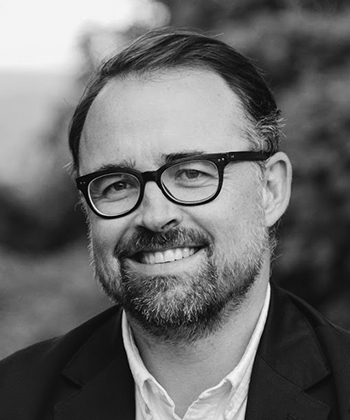 Kelly joined MASS in 2014 to lead our Kigali office, overseeing the growth of the practice from an office of 8 to 80 over a five year period. He has led the design and implementation of several of MASS’s projects across the East Africa - notably the award winning Munini District Hospital and Rwanda Ministry of Health’s Typical Hospital Plans, headquarters for both One Acre Fund and Andela’s in Kenya, and the Rwanda Institute for Conservation Agriculture. Kelly is a past recipient of the Canada Council’s Prix de Rome for Emerging Practitioners, the Irving Grossman Prize for innovation in housing design, and both the AIA and RAIC medals. He has held an adjunct professorship at the University of Waterloo and a Visiting Lectureship at Harvard University. ↑back
Kelly joined MASS in 2014 to lead our Kigali office, overseeing the growth of the practice from an office of 8 to 80 over a five year period. He has led the design and implementation of several of MASS’s projects across the East Africa - notably the award winning Munini District Hospital and Rwanda Ministry of Health’s Typical Hospital Plans, headquarters for both One Acre Fund and Andela’s in Kenya, and the Rwanda Institute for Conservation Agriculture. Kelly is a past recipient of the Canada Council’s Prix de Rome for Emerging Practitioners, the Irving Grossman Prize for innovation in housing design, and both the AIA and RAIC medals. He has held an adjunct professorship at the University of Waterloo and a Visiting Lectureship at Harvard University. ↑back
Lara Pinchbeck
MA (Material Culture + Design Studies), BEDS (Architecture), Professional Human Ecologist, Rick Hansen Foundation Professional Accessibility Assessor, Public Relations Diploma, International Association for Public Participation Certification, PRINCE2 Proj
Founder + Principal; PHD Student, Lara Pinchbeck: Research+Design; University of Alberta
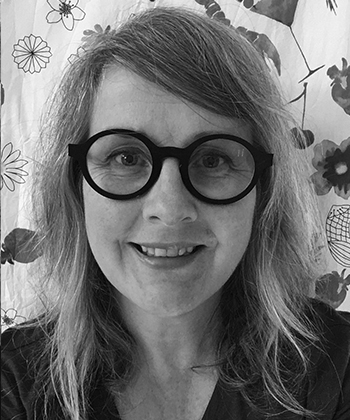 Lara Pinchbeck is a researcher and designer whose work focuses on making indoor and outdoor spaces accessible to everyone. She is a professional accessibility assessor for the Rick Hansen Foundation and holds a Master of Arts in Human Ecology (Material Culture + Design Studies). Her Ph.D. research is on designing optimal spaces for people with invisible disabilities, dementia and our ageing population. ↑back
Lara Pinchbeck is a researcher and designer whose work focuses on making indoor and outdoor spaces accessible to everyone. She is a professional accessibility assessor for the Rick Hansen Foundation and holds a Master of Arts in Human Ecology (Material Culture + Design Studies). Her Ph.D. research is on designing optimal spaces for people with invisible disabilities, dementia and our ageing population. ↑back
Ksenia Eic
NWTAA, OAA, MRAIC
Managing Associate, Taylor Architecture Group
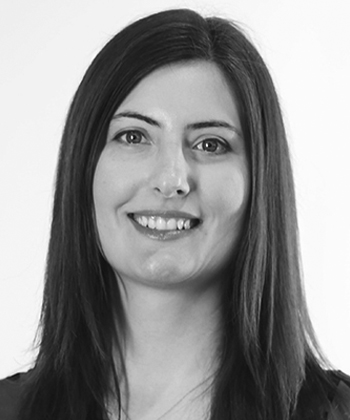 Ksenia is an architect registered in the Northwest Territories and Ontario. She is a managing associate of the Yellowknife-based firm Taylor Architecture Group, aiding in office/business management of this growing firm. Ksenia is also a committee member of the RAIC Emerging Practitioners RAIC EP - an advocacy group for interns and other emerging practitioners. ↑back
Ksenia is an architect registered in the Northwest Territories and Ontario. She is a managing associate of the Yellowknife-based firm Taylor Architecture Group, aiding in office/business management of this growing firm. Ksenia is also a committee member of the RAIC Emerging Practitioners RAIC EP - an advocacy group for interns and other emerging practitioners. ↑back
Lisa Landrum
B.Arch, M.Arch2, PhD, MAA, AIA, FRAIC
Associate Professor, Associate Dean, University of Manitoba
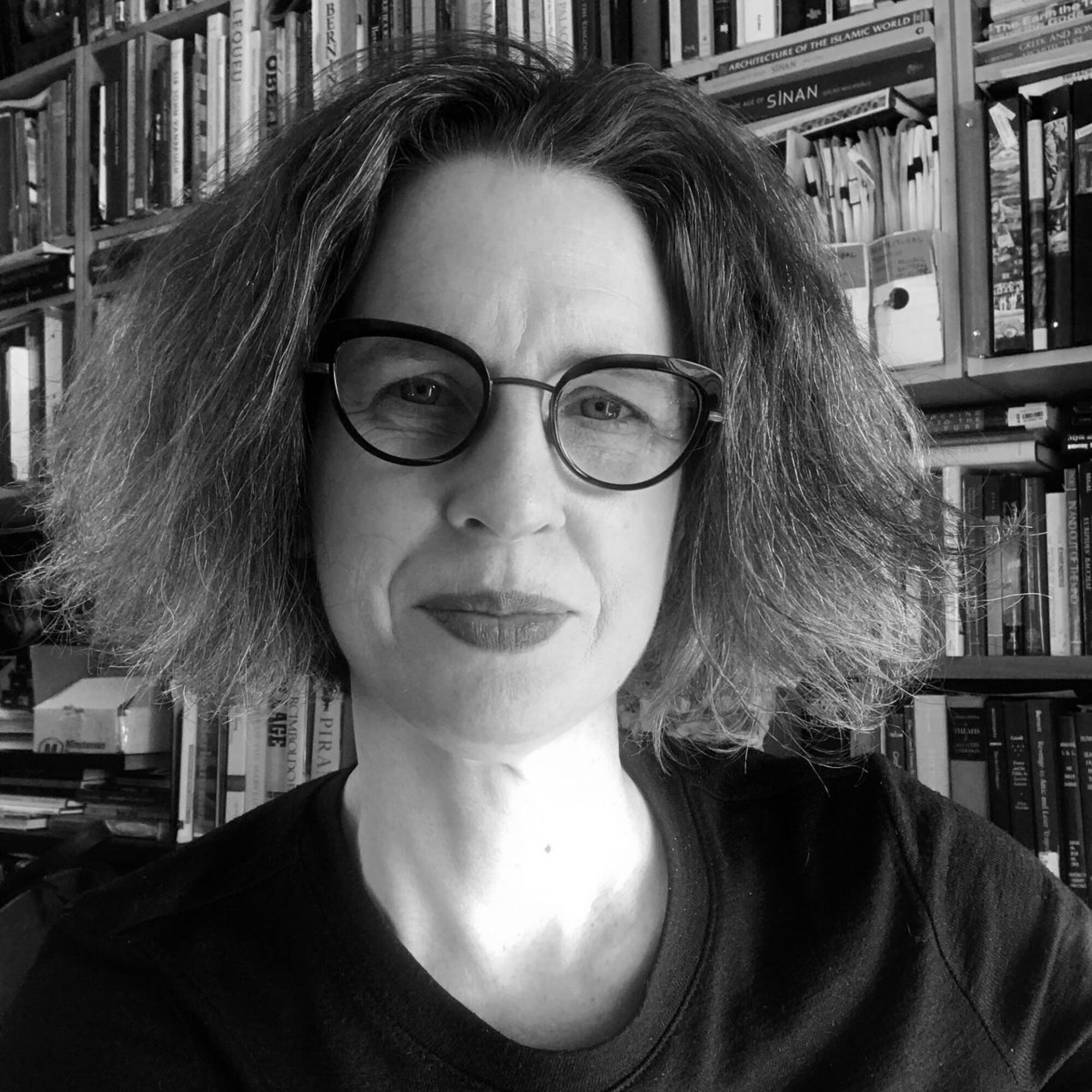 Dr. Landrum is Associate Professor and Associate Dean Research in the Faculty of Architecture at the University of Manitoba, and a registered architect in Manitoba and New York State. She is working with the RAIC, CALA and CCUSA to mobilize an architecture policy for Canada, and is leading the CAFÉ consultations. Landrum holds a professional Bachelor of Architecture from Carleton University, and a Master's and Ph.D. in Architectural History and Theory from McGill University. Her scholarship on architectural agency and the role of the architect has been presented and published internationally. ↑back
Dr. Landrum is Associate Professor and Associate Dean Research in the Faculty of Architecture at the University of Manitoba, and a registered architect in Manitoba and New York State. She is working with the RAIC, CALA and CCUSA to mobilize an architecture policy for Canada, and is leading the CAFÉ consultations. Landrum holds a professional Bachelor of Architecture from Carleton University, and a Master's and Ph.D. in Architectural History and Theory from McGill University. Her scholarship on architectural agency and the role of the architect has been presented and published internationally. ↑back
Mark Erickson
Principal, Studio North
 In his early life, Mark spent a lot of time in the workshop with his dad learning how to use tools and make things. For him, the process of making has always involved learning through experience and being hands on. While studying Fine Arts at the University of Calgary with a focus on drawing and sculpture, Mark found an interest in articulating spatial concepts using a variety of media. He received his Bachelor of Fine Arts with distinction in 2007. He then achieved his Bachelor of Environmental Design and Masters of Architecture at Dalhousie University in Halifax where he received his Royal Architectural Institute of Canada's (RAIC) Honour Roll Certificate.
In his early life, Mark spent a lot of time in the workshop with his dad learning how to use tools and make things. For him, the process of making has always involved learning through experience and being hands on. While studying Fine Arts at the University of Calgary with a focus on drawing and sculpture, Mark found an interest in articulating spatial concepts using a variety of media. He received his Bachelor of Fine Arts with distinction in 2007. He then achieved his Bachelor of Environmental Design and Masters of Architecture at Dalhousie University in Halifax where he received his Royal Architectural Institute of Canada's (RAIC) Honour Roll Certificate.
He has worked in architectural offices in London, UK, Vancouver, and Halifax, and taught architectural technology at the Bachelor of Community Building and Design (BCBD) program at the University of The Gambia, Banjul, West Africa. Working internationally has helped broaden his understanding of how architecture is shaped according to culture, climate, geography and ways of living. ↑back
Sean McEwen
Architect aibc fraic
Architect, S.R. McEwen Architect
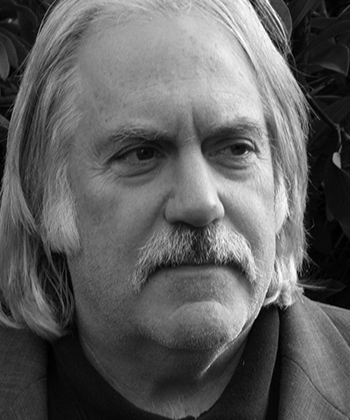 Sean McEwen has practiced architecture in his home city of Vancouver for over forty years. He consults principally to the non-profit sector and has worked extensively with neighbourhood groups and social advocacy organizations. Many of his projects deal with the adaptive re-use and restoration of heritage buildings for community and social housing uses. ↑back
Sean McEwen has practiced architecture in his home city of Vancouver for over forty years. He consults principally to the non-profit sector and has worked extensively with neighbourhood groups and social advocacy organizations. Many of his projects deal with the adaptive re-use and restoration of heritage buildings for community and social housing uses. ↑back
Murray Gallant
OAA, FRAIC, AIA, B.Arch., H.Dipl. Arch. Tech.
Chief Architect, National Defence
 Murray Gallant, Chief Architect, National Defence. 27 years experience in federal government. Chair B651 committee; member Rick Hansen Foundation Technical Working Group; member Ottawa Accessibility Advisory Committee; and chair Federal Architects Network. Past councillor OAA; past President CACB; and past chair ORSA. ↑back
Murray Gallant, Chief Architect, National Defence. 27 years experience in federal government. Chair B651 committee; member Rick Hansen Foundation Technical Working Group; member Ottawa Accessibility Advisory Committee; and chair Federal Architects Network. Past councillor OAA; past President CACB; and past chair ORSA. ↑back
Reza Assasi
PhD (Architecture), MArch II, MArch, OAA
Architect, Professor, Centennial College

Dr. Reza Assasi is professor of Architecture at Centennial College and Senior Architect at Hatch Ltd. He holds Ph.D. in Architecture History and Theory and Master of Architecture from McGill University. He is a registered architect in Ontario and is an active member of several international scientific societies with research interest in Architecture History, Philosophy, and Emerging Design Technologies. ↑back
Robert J Smith
OAA, FRAIC, AIA, B.Arch., H.Dipl. Arch. Tech.
Architectural Advisor, House of Commons

Robert is currently employed as an Architectural Advisor at the House of Commons. In response to recent anti-gender discrimination legislation, he is researching and advising the House on non-binary washrooms facilities. He is also working with the accessibility advisory group on the rehabilitation of Center Block. With the newly minted Accessibility Act, Robert is working to help define Architectural guidelines on accessibility and sustainability. Previous to this, Robert was Chief Architect for Minto Communities, a multi-year national award winning sustainable green builder. ↑back
Ryan Duquette
Licensed private investigator, Masters of Science (Digital Forensics Management), Certified Fraud Examiner
Partner - Security, Privacy and Risk Consulting, RSM Canada
 Ryan Duquette focuses on cyber incident response, privacy and technology risks, digital forensics and cyber fraud matters. Ryan has been an investigator for over twenty years and was previously a police officer focusing on cybercrime and fraud cases. Ryan works closely with clients involved in workplace investigations and civil litigation matters including data breaches, intellectual property theft and HR investigations. ↑back
Ryan Duquette focuses on cyber incident response, privacy and technology risks, digital forensics and cyber fraud matters. Ryan has been an investigator for over twenty years and was previously a police officer focusing on cybercrime and fraud cases. Ryan works closely with clients involved in workplace investigations and civil litigation matters including data breaches, intellectual property theft and HR investigations. ↑back
Terrence E. Smith-Lamothe
MRAIC, NSAA, M.Arch., B. Env. S., B. Sc., LEED a.p.
Architect, Architech, Ltd.
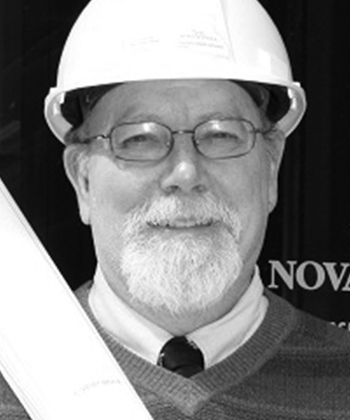 T. E. Smith-Lamothe organized Architectural Overdrive!–a discussion group about architecture and good design–for the Halifax design community in 2009. The group meets quarterly, and a recurring theme has been homes or offices self-designed by architects. As a moderator for the group, he has interviewed architects about the projects and visited many of the homes and offices. He has also written articles on architecture for Azure, Canadian Collector, Visual Arts News and has been an adjunct professor at the University of Dalhousie School of Architecture. ↑back
T. E. Smith-Lamothe organized Architectural Overdrive!–a discussion group about architecture and good design–for the Halifax design community in 2009. The group meets quarterly, and a recurring theme has been homes or offices self-designed by architects. As a moderator for the group, he has interviewed architects about the projects and visited many of the homes and offices. He has also written articles on architecture for Azure, Canadian Collector, Visual Arts News and has been an adjunct professor at the University of Dalhousie School of Architecture. ↑back
If I registered for the RAIC 2020 Conference on Architecture in Edmonton, do I need to register for the RAIC 2020 Virtual Conference on Architecture?
Yes. If you previously registered for the RAIC 2020 Conference on Architecture in Edmonton you will need to register for the RAIC 2020 Virtual Conference on Architecture.
Do I need to be a member of the RAIC to register for the virtual conference?
No, membership is not required; virtual conference attendance is open to all.
What is the registration cost?
|
Registration Type |
Regular Pricing |
|
RAIC Member: |
$282 |
|
RAIC Non-Member: |
$357 |
|
RAIC Intern Member: |
$187 |
|
Intern Non-Member |
$232 |
|
RAIC Student Member: |
$124 |
|
Student Non-Member |
$157 |
|
Retired Member: |
$187 |
|
Retired Non-Member: |
$232 |
Registrations are non-refundable and non-transferable.
What is included in the registration?
Included in the registration is access to 18 hours of structured continuing education learning units through 18 sessions. Six of these sessions were broadcast live with a Q&A period following each session. These will be made available June 18. Twelve sessions will be available for access on-demand.
What format are sessions?
The live broadcast will featured pre-recorded presentations and will be followed by a 10-minute live Q&A period with the speakers.
How do I access sessions?
All sessions will be accessible through the RAIC’s Learning Management System (LMS). Instructions on the RAIC LMS can be accessed by clicking here. You will need to log in to www.raic.org using your registration account. If you do not remember your email and password, you may reset it. If you are having trouble logging in, contact info@raic.org.
How do I access my continuing education certificates?
Individual continuing education certificates for each attended and viewed sessions will be made available through the RAIC’s LMS after the completion of the post-event survey and session quiz. For the continuing education certificate to be generated, participants must achieve a mark of 80% or higher on the post-session quiz and complete the feedback survey for each session through the RAIC LMS. More information about the RAIC LMS can be accessed by clicking here.
Do sessions qualify for AIA CES learning units?
Yes. The RAIC is an AIA CES Approved Provider. Sessions attended in their entirety qualify for one (1) CES learning unit. If you wish for the RAIC to report your attendance, email conference@raic.org and quote your AIA membership number. AIA members may also self-report their attendance and record their earned learning units.
How do I access RAIC’s LMS?
Once you have registered, click on the RAIC LMS link in the menu at the top of the page to access the RAIC 2020 Virtual Conference on Architecture. You will see this listed on the dashboard when you sign in. (Please note, if you click on the link and you are not automatically signed in to the RAIC LMS, please click Login and you will be automatically signed in.
For detailed instructions on accessing the RAIC’s LMS click here.
Do I need special software to watch the webcast sessions?
All sessions will be accessible through the RAIC’s Learning Management System (LMS).
Can I watch the webcast sessions on my phone or tablet computer?
For the best audio-visual experience, we recommend accessing the RAIC LMS through a desktop or laptop computer with a hardwired internet connection. If using Wi-Fi, we recommend being as close to the router as possible.
How will I earn credit for the educational sessions?
Each session attended in its entirety is eligible for one (1) structured continuing education learning unit.











